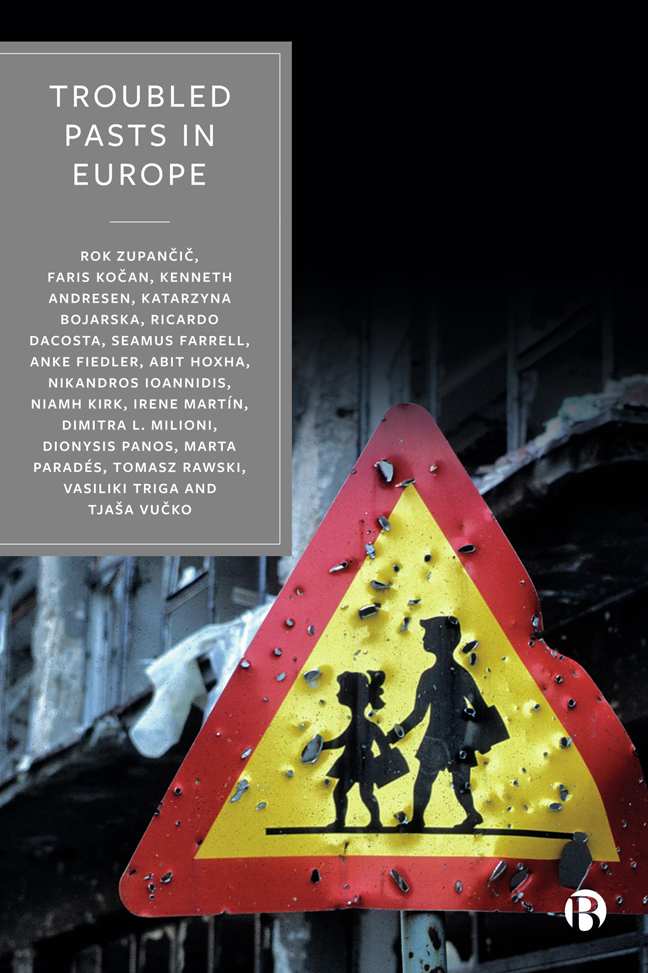52084 results in International relations and international organisations
Index
-
- Book:
- Weaponising Evidence
- Published online:
- 11 January 2024
- Print publication:
- 01 February 2024, pp 279-291
-
- Chapter
- Export citation
4 - Cultivating Humanitarianism
-
-
- Book:
- Civility, Barbarism and the Evolution of International Humanitarian Law
- Published online:
- 11 January 2024
- Print publication:
- 01 February 2024, pp 61-84
-
- Chapter
- Export citation
Racial Tropes in the Foreign Policy Bureaucracy: A Computational Text Analysis
-
- Journal:
- International Organization / Volume 78 / Issue 2 / Spring 2024
- Published online by Cambridge University Press:
- 02 August 2024, pp. 189-223
- Print publication:
- Spring 2024
-
- Article
-
- You have access
- Open access
- HTML
- Export citation
Russian Invasion of Ukraine and Chinese Public Support for War
-
- Journal:
- International Organization / Volume 78 / Issue 2 / Spring 2024
- Published online by Cambridge University Press:
- 29 April 2024, pp. 341-360
- Print publication:
- Spring 2024
-
- Article
-
- You have access
- Open access
- HTML
- Export citation
10 - Humanitarians and Business
-
- Book:
- The Contemporary International Committee of the Red Cross
- Published online:
- 01 February 2024
- Print publication:
- 01 February 2024, pp 197-219
-
- Chapter
- Export citation
Index
-
- Book:
- The Contemporary International Committee of the Red Cross
- Published online:
- 01 February 2024
- Print publication:
- 01 February 2024, pp 439-462
-
- Chapter
- Export citation
14 - Has the Traditional Focus Been Lost?
-
- Book:
- The Contemporary International Committee of the Red Cross
- Published online:
- 01 February 2024
- Print publication:
- 01 February 2024, pp 296-310
-
- Chapter
- Export citation
Table of Treaties
-
- Book:
- Weaponising Evidence
- Published online:
- 11 January 2024
- Print publication:
- 01 February 2024, pp xvii-xviii
-
- Chapter
- Export citation
5 - Conclusions
-
- Book:
- Weaponising Evidence
- Published online:
- 11 January 2024
- Print publication:
- 01 February 2024, pp 257-276
-
- Chapter
- Export citation
Contributors
-
- Book:
- Civility, Barbarism and the Evolution of International Humanitarian Law
- Published online:
- 11 January 2024
- Print publication:
- 01 February 2024, pp vii-x
-
- Chapter
- Export citation
11 - Interpreting the Mandate
-
- Book:
- The Contemporary International Committee of the Red Cross
- Published online:
- 01 February 2024
- Print publication:
- 01 February 2024, pp 220-249
-
- Chapter
- Export citation
Abbreviations
-
- Book:
- Weaponising Evidence
- Published online:
- 11 January 2024
- Print publication:
- 01 February 2024, pp xix-xx
-
- Chapter
- Export citation
13 - Has the Traditional Focus Been Lost?
-
- Book:
- The Contemporary International Committee of the Red Cross
- Published online:
- 01 February 2024
- Print publication:
- 01 February 2024, pp 266-295
-
- Chapter
- Export citation
17 - Conclusion
-
- Book:
- The Contemporary International Committee of the Red Cross
- Published online:
- 01 February 2024
- Print publication:
- 01 February 2024, pp 365-393
-
- Chapter
- Export citation
Abbreviations
-
- Book:
- Civility, Barbarism and the Evolution of International Humanitarian Law
- Published online:
- 11 January 2024
- Print publication:
- 01 February 2024, pp xiii-xiv
-
- Chapter
- Export citation
3 - The Activities of the FCTC Conference of the Parties
-
- Book:
- Weaponising Evidence
- Published online:
- 11 January 2024
- Print publication:
- 01 February 2024, pp 114-182
-
- Chapter
- Export citation
11 - A Step Back to Take a Step Forward
-
-
- Book:
- Civility, Barbarism and the Evolution of International Humanitarian Law
- Published online:
- 11 January 2024
- Print publication:
- 01 February 2024, pp 218-242
-
- Chapter
- Export citation

Building Capabilities for Earth System Governance
-
- Published online:
- 30 January 2024
- Print publication:
- 09 May 2024
-
- Element
-
- You have access
- Open access
- HTML
- Export citation
Through the looking glass: the effect of participation in a participatory budget on citizens’ populist attitudes
-
- Journal:
- European Political Science Review / Volume 16 / Issue 3 / August 2024
- Published online by Cambridge University Press:
- 29 January 2024, pp. 448-464
-
- Article
-
- You have access
- Open access
- HTML
- Export citation

Troubled Pasts in Europe
- Strategies and Recommendations for Overcoming Challenging Historic Legacies
-
- Published by:
- Bristol University Press
- Published online:
- 25 January 2024
- Print publication:
- 29 September 2023

